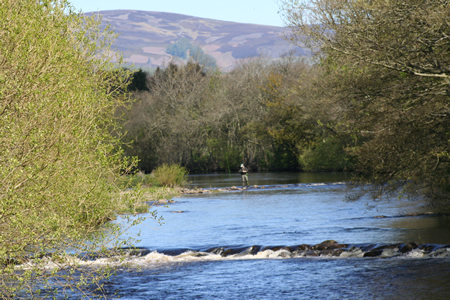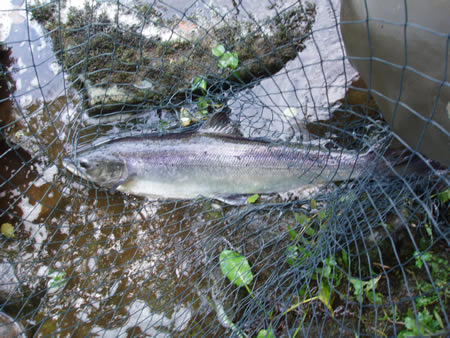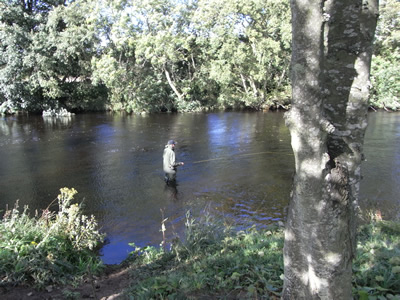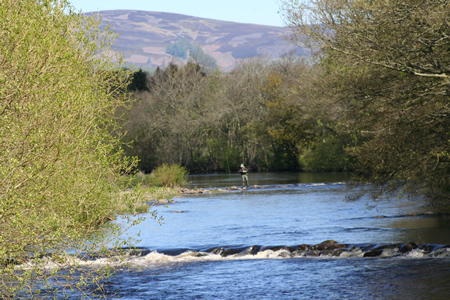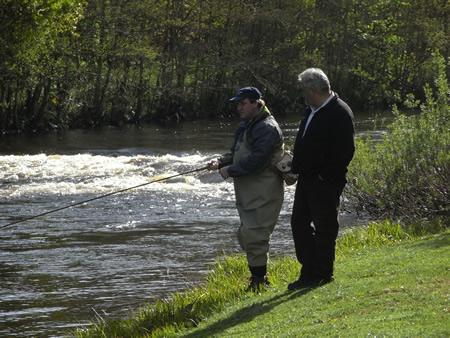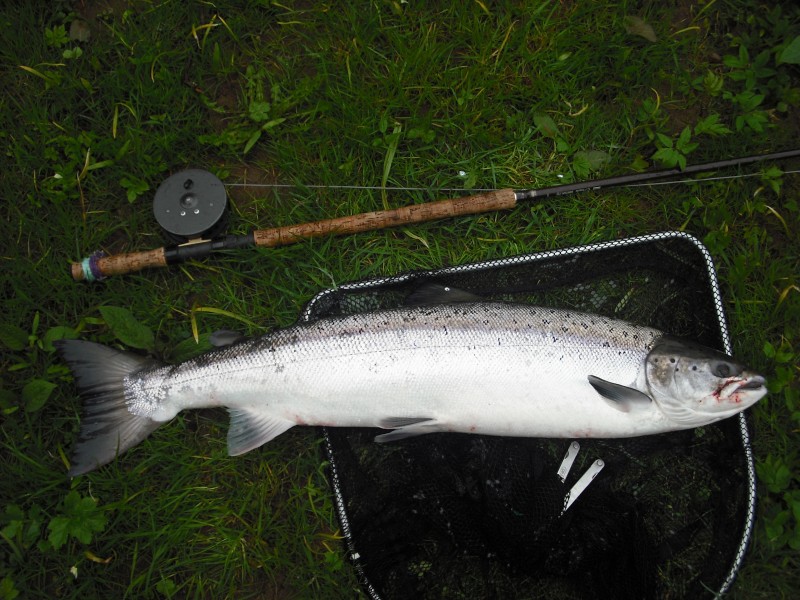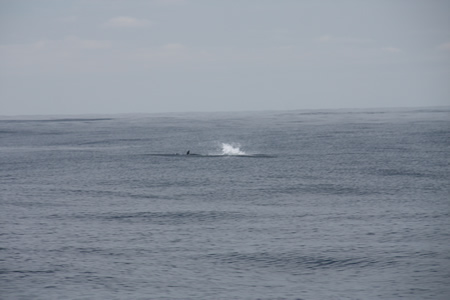These bulletin blogs represent news about Finavon and the South Esk, and my views as a riparian owner. They are not the views of any other organisation, nor are they designed to promote the interests of any individual or organisation other than Finavon Castle Water and factors affecting the fishery. Tony Andrews
As I write this blog on the 25th of August, the season’s catch totals for Finavon are 82 salmon and grilse and 140 sea trout. This catch is on target for average numbers of salmon and grilse – perhaps a bit better than that – and above average for sea trout. It is a fair and accurate statement, based on observation and catches, to state that all the pools at FCW have fish, and that there is currently a predominance of MSW salmon – well into the upper teens of pounds in some cases. On the other hand, grilse numbers have been low, the fish generally under nourished, and there has been a re-appearance of Red Vent Syndrome (RVS) in about 50% of grilse observed.
View from the suspension bridge upstream to the Flats with Volcano beyond. This stretch of Milton Beat is the plateau looking upstream after the considerable gradient and fast water through Castle Stream, Craigo Stream and Red Brae. The section of River between the tail of the Flats and the Haughs Aqueduct is (I think) the steepest gradient between Inshewan and the sea. The effect of this steep, fast flowing stretch of river is to slow fish down, especially in cold water, and the pools between Tyndals and the Flats therefore benefit from resting fish becoming available to the fly fisherman in ideal depths and flows to catch fish. Milton Beat has in 2012 consistently performed better in terms of catches than the other three beats, although in low water and in the sea trout season all the four beats fish equally well.
This volatile summer has provided ample water for salmon and sea trout to migrate upriver. The result is that fish are now well distributed throughout the catchment, many of which will be well positioned to access the spawning areas when the water temperatutres drop towards the middle of October. Evidence for this claim can be seen in the distribution map of the Marine Scotland tagging project, albeit with only 12 fish marked on the map.
These variable water levels have given the fish little chance of settling quietly into the main holding pools, such as Boat Pool, Red Brae, Haughs, Melgund and Indies. As levels have risen and the water coloured up with peat stain and gritty silt and acidity, the fish have become reluctant to take. It also hasn’t helped that the Lemno Burn now spews out copious quantities of muddy silt in suspension after the slightest rise in level, which is the result of the dredging done by the farmer (with SEPA authorisation) above Battledykes. However, we have had a brief respite since the 4 foot plus spate last week, with the result that levels have remained good, the water cleared to the clarity of a pale malt whisky, and conditions have become ideal for catching salmon on small flies fished intelligently through the pools.
8lbs salmon caught and returned in Tyndals Pool (Milton Beat) on 23 August 2012.
In the last two days we have caught 12 salmon, in sizes from grilse (all a bit thin) of around 3lbs to MSW salmon of 13, 14 and 15lbs. We have been able to reduce the size of fly from size 8 to size 12, and the lightly dressed Cascade has done well. Last evening at about 7pm I took a split-fresh grilse of 5lbs from the fast water at the head of Bridge Pool. It was a lively fish and, playing it in the middle of the pool (where you have to wade to cover the main lies under the north bank) and with the fish cartwheeling down the pool, there might have been the briefest entertainment for lorry drivers on the A90 as they whooshed past on their way to meet their end of week delivery deadlines.
Willows in good water for a salmon, grilse or sea trout. FCW’s top pool. I know I have promised to write about Willows Pool on Milton Beat, which, over the years, has outperformed all other FCW poools. I should get round to doing that soon. In the meantime this blog suggests at least one of the reasons why Milton Beat has fished so well in 2012, and of course Willows is the heart of the beat.
As we move into the last two months of the 2012 season, the quality of fishing at FCW will depend, as it always does, on reasonable autumn flows and sufficient salmon to provide our visitors with, at the very least, the spectacle of salmon showing in the pools. If we have a late run of MSW salmon we can expect some big fish to be amongst them. Many of these late running salmon will have fed in the western half of the Atlantic Ocean, where the abundance of prey species is much better than in the Norwegian Sea. Given water, I expect there to be new fish coming into the beat right up to the last day of the season on the 31st of October.
TA 26/8/2012
